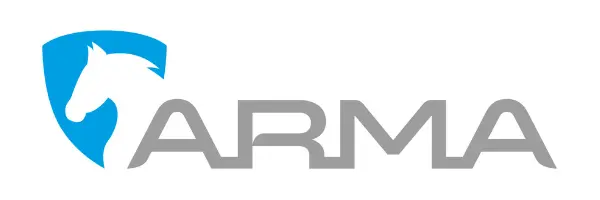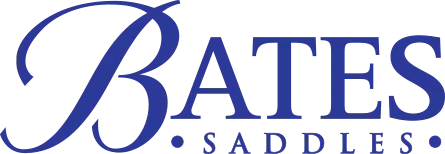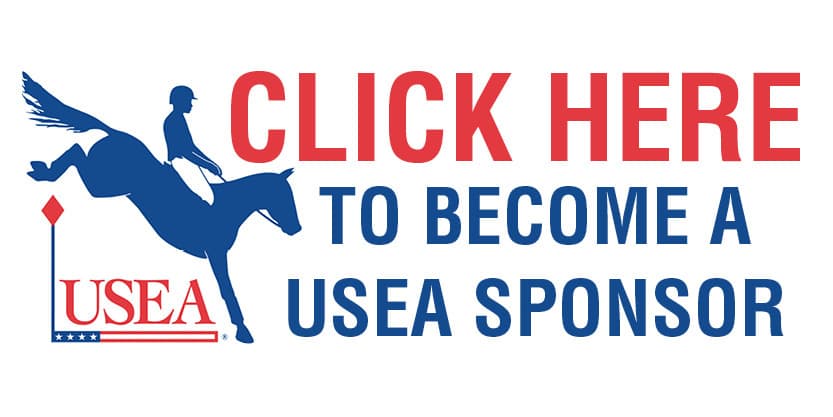The Art of Longing with ECP Level V Coach Mary D'Arcy
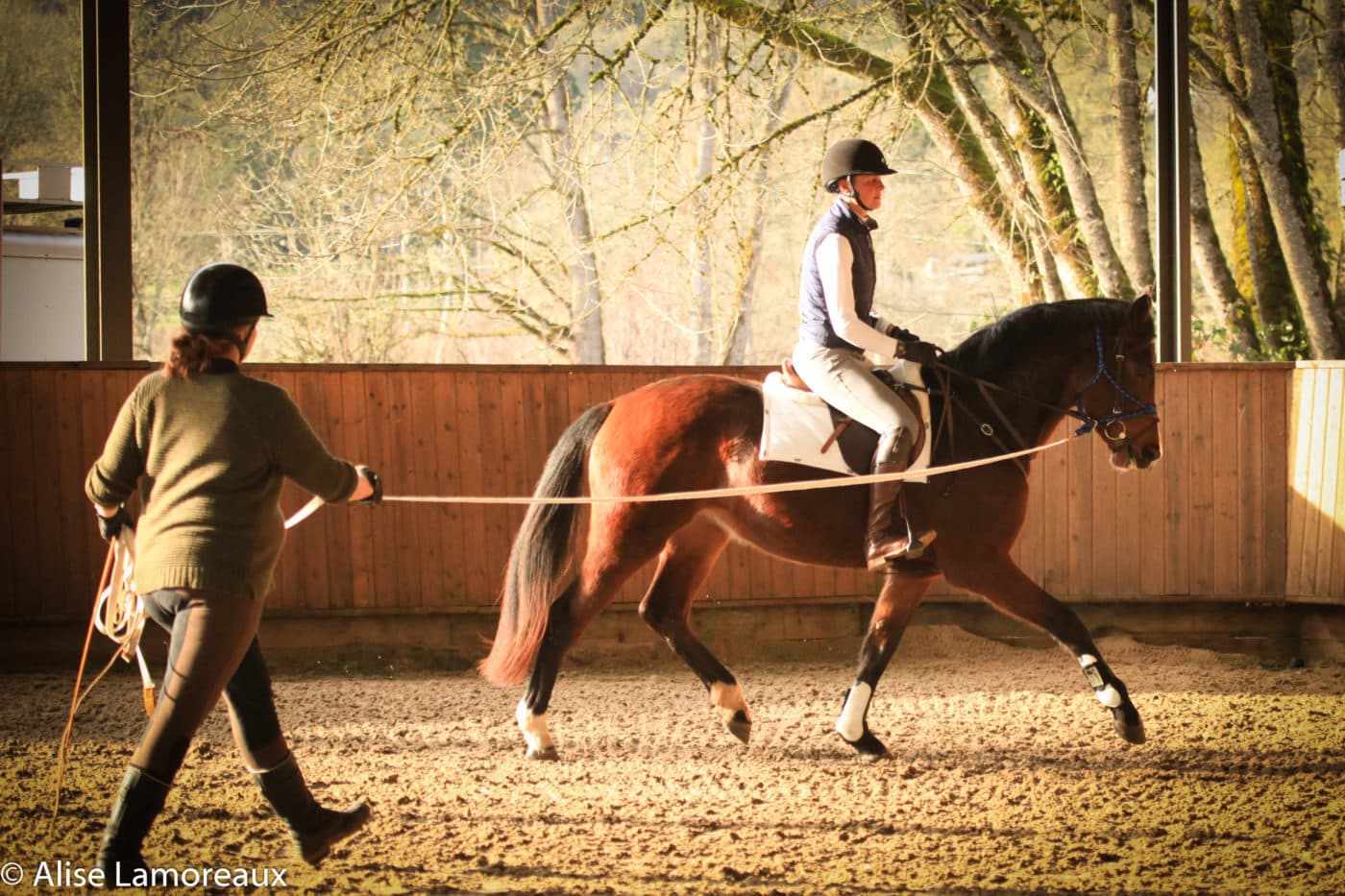
While exercise off the horse is always useful to improve a rider’s cardio fitness, strength, and flexibility, there’s still no substitute for time spent in the saddle.
If you’re looking for some variety in your training and have a safe, reliable horse, longing (also known as lunging) can be a useful tool to improve your seat, strength, and coordination in the saddle.
ECP Level V Coach and ECP Faculty Member Mary D’Arcy says that longing the rider can help improve position faults, posture, core strength and fitness, improve the use of the aids, and develop an independent seat. It can also improve the horse’s gaits, transitions, and lateral suppleness.
First and foremost, she said, is a solid understanding of best practices for longing a horse without a rider. The graphic below, created from D’Arcy’s notes utilized in a clinic she led, provides a wealth of information regarding safety considerations and basic principles of longing. It is important that coach, rider, and barn staff are all well-versed on the appropriate way to longe a horse.
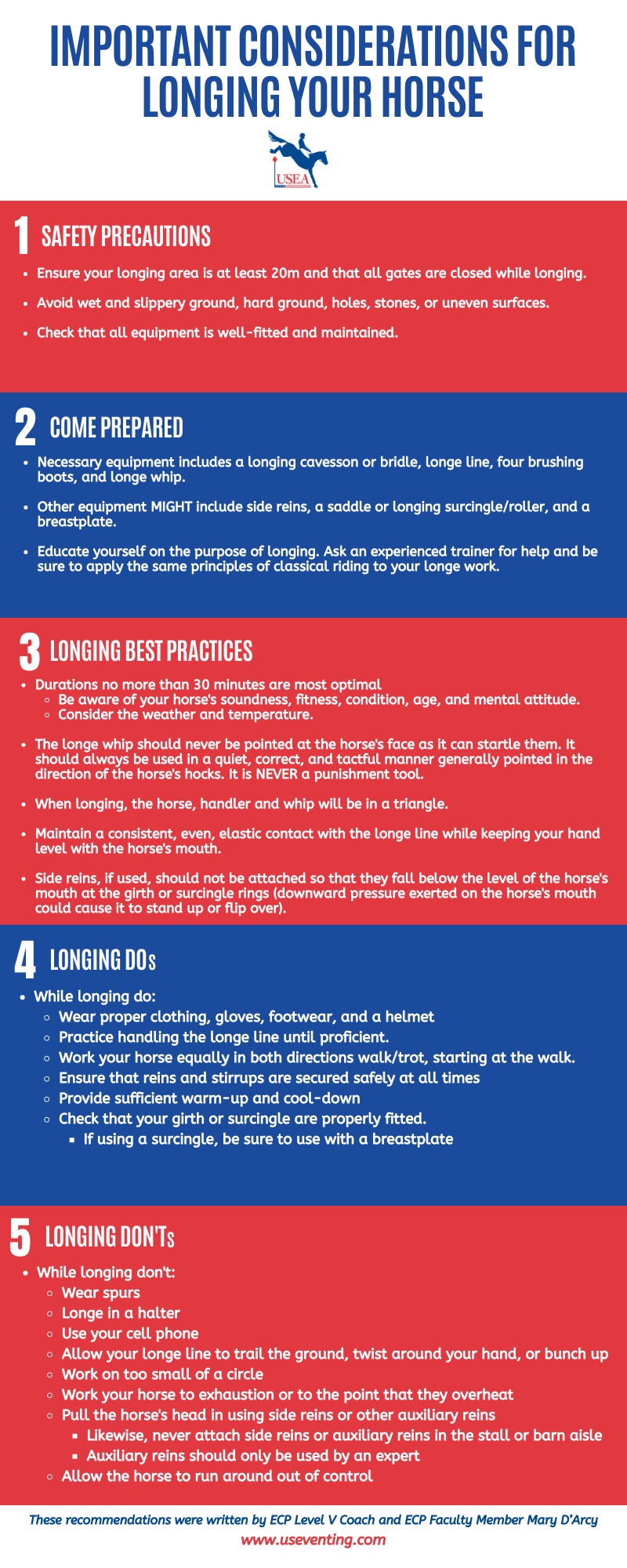
Only after these fundamentals have been mastered should a coach instruct a rider on the longe. The most important factor in this type of under saddle exercise, according to D'Arcy, is a safe horse and an experienced coach on the ground.
“When longing the rider, everything we have noted above regarding longing the horse is relevant and prerequisite,” she stated. “You need a bombproof horse. Suitability of horse is number one. A lot of horses are not trained to longe or don’t like riders moving about. You need a solid schoolmaster. Your recently off-the-track Thoroughbred is not a safe candidate for longing the rider.”
D’Arcy also noted that the horse should not only be well trained, but also be a comfortable ride and a good size for the student. She recommends keeping the circle large, making sure to work both sides equally and no more than a 30 minute session.
Just like with any riding session, safety of the equipment is key. All tack should be well maintained and in excellent condition. The rider should be utilizing a comfortable and suitable saddle and should not be wearing spurs. The horse should wear four boots, and the coach should have a longe whip in hand as well as wear gloves. A secured neck strap should be used in case of loss of balance, and D’Arcy recommends longing horses in side reins to maintain a steady contact and head and neck position while the rider focuses on themselves.
Prior to the work, the coach should assess the following in planning the lesson:
- The suitability of the horse for the rider
- The exercises to be used relative to the rider’s experience, fitness, competence, and confidence.
- The intensity of the workout
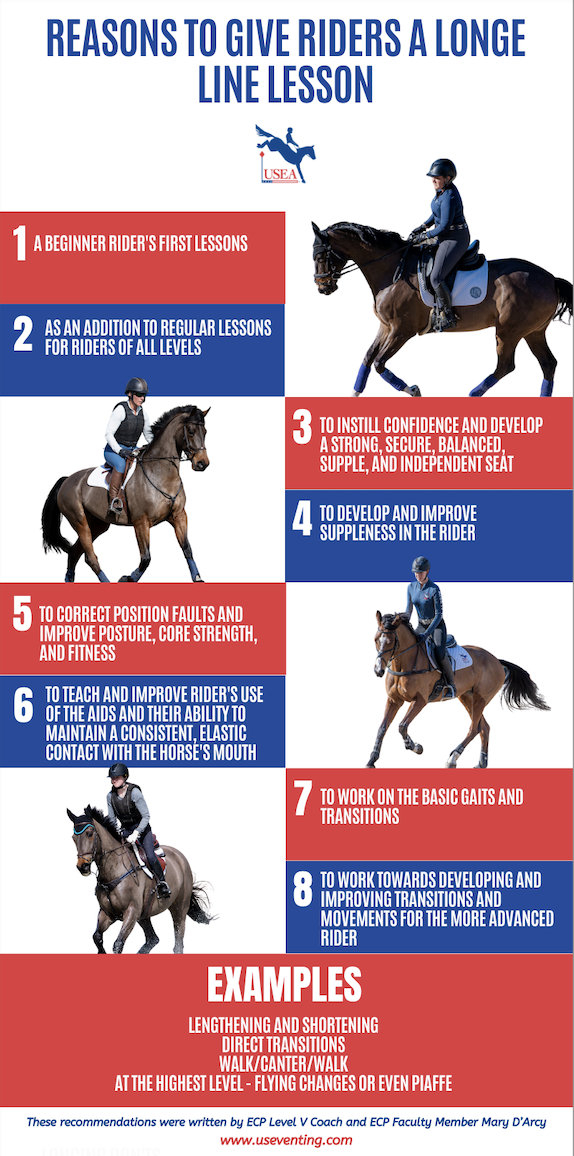
As with any ride, the warm-up is essential. Warmups should last 5-10 minutes each direction. Every instructor will have their favorite exercises, but D’Arcy had a few suggestions such as starting in walk and having riders drop their stirrups and make circles with their feet to loosen the ankle joint. Then, they can also try lifting each leg out of the saddle from the hip joint and shifting it back, stretching down and back.
Arm and shoulder circling to help teach independence of the seat and arms, and rotating the torso with arms out to help with core strength and balance:
“Your hands can go out to either side and rotate your torso to the left and right so that at any given moment, your leg is maintaining the correct position and your seat is in the correct place. Your left hand is pointing towards the ears, and your right hand is pointing towards the tail,” said D’Arcy.
Try dropping your stirrups in trot and canter to work on swinging your seat and following your horse’s movements.
To work on the horse’s gaits, as well as help the more competent rider, try lengthening and shortening the stride or working on transitions with and without stirrups. Leg yielding on the circle can help with lateral suppleness and helps the rider to coordinate the aids.
“When you’ve worked on the correct seat and hand and arm position—straight lines through shoulder, hip, and heel, the other straight line from the elbow through the forearm, to the rein and the horse’s mouth, the thumbs on top with a slight curve at the wrist and the ability to use all the joints equally on both sides of the rider—it equalizes the rider’s use of the aids and strengthens up any deficiencies. Then you can start working on their influence on the horse.”
D’Arcy concluded, “It could be very basic—walk to trot. This could be in the very novice stage where the handler is controlling the horse so the rider can focus on their position. You can observe the rider giving the aids to the horse and whether they are applying the aids correctly. They can then recognize the effect those aids had on the horse, the rider learns to be consistent with correct aids and the result will be apparent.”
Disclaimer: This is not a comprehensive article on every aspect of longing, on what equipment is used, how the equipment is fitted, or the methodology used. Please consult an experienced trainer as lack of experience and knowledge when longeing can lead to serious accidents for trainer and horse.
About the USEA Eventing Coaches Program (ECP)
Coaches are essential to the training of riders and horses for safe and educated participation in the sport of eventing. The USEA Eventing Coaches Program (ECP), formerly known as the Instructors’ Certification Program (ICP), was initiated in 2002 to educate all levels of eventing coaches with crucial training principles upon which they can continue to build throughout their teaching careers. ECP offers educational workshops and assessments by which both regular coaches, Level I through Level V, Young Event Horse (YEH) coaches, and Young Event Horse professional horse trainers can become ECP certified. Additional information about ECP’s goals, benefits, workshops, and assessments as well as names and contact information for current ECP certified coaches, YEH coaches, and YEH professional horse trainers are available on the USEA website. Click here to learn more about the USEA Eventing Coaches Program.





